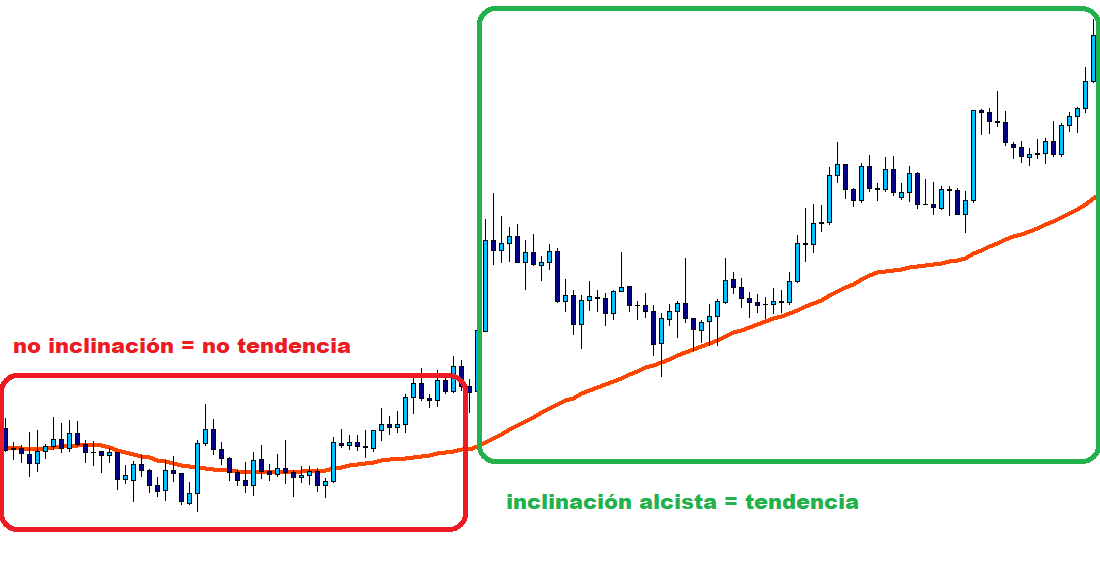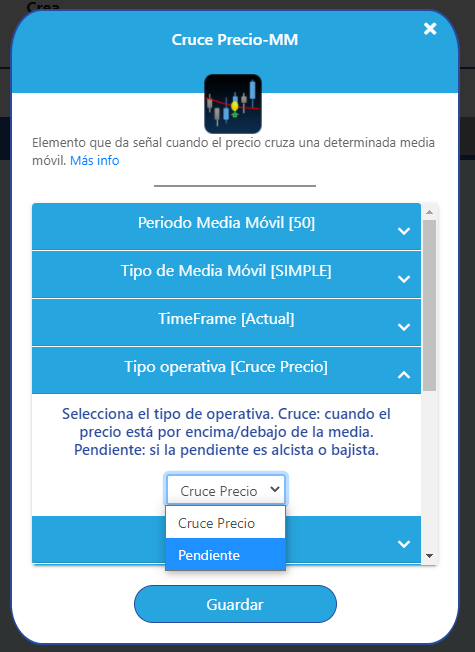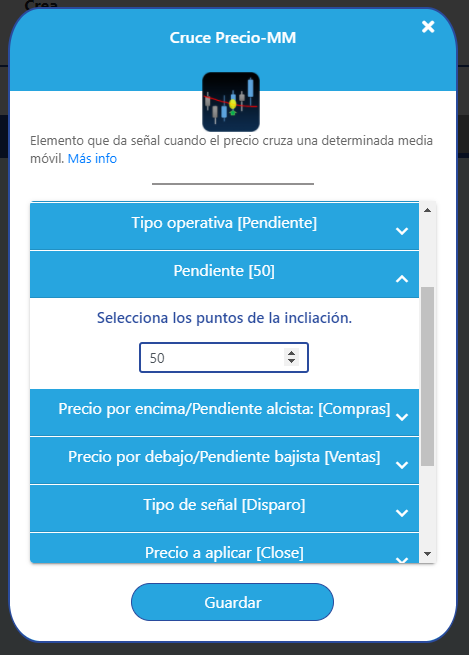When we see the moving average technical indicator, we automatically think of 2 interpretations:
- Price average crossover
- Or 2 moving average crossover
That happens because those are the ways we were taught to interpret the moving average crossover. However, there exists another way to interpret it: analyzing the slope.
Analyzing the slope to avoid noise
One of the main strengths of analyzing the slope is avoiding false signals that may happen with side markets, the worst enemy of tendential systems that use the moving average crossover.
That way, requiring a certain slope in the average, we avoid signals when the market is uncertain.

From the example above, we can see in the red box that there exist moments in which moving average crosses but there exists practically no slope, so it would be a dismissed case by the tendency filter.
In the green box, the moving average starts a bullish slope (the difference between the points of the moving average with respect to the previous point, is higher in the green than in the red stretch).
The key for this operation is finding the point difference according to the asset and timeframe to operate.
The more slope points configured, the stepper the slope to validate the signal. While the fewer slope points configured then the signal will be more sensitive to give a signal with a minimum tendency.
Working with the slope in tradEAsy
In tradEAsy this operation type is incorporated, you can find it in the moving average element.

The first parameters refer to the moving average number of period, as the moving average type when doing the lecture.
Regarding the operation type, by default, will be marked to use it as “Price crossover”. This means that the conventional lecture will give us the signal when the price crosses the moving average at bullish or bearish.
To make the slope reading, we must change the operation type to “Slope”.

Next, in the slope parameter, we are going to indicate the number of points difference between the actual moving average value and the previous value.
Remember:
- The more points we have the more slope demanded and vice-versa.
- The same element can be used for positive and negative slope (also to open sales or bearish positions).
Filter or shot
The same as with indicators, the moving average slope can be configured as a filter or as a shot:
As a shot: the element will give the signal immediately after the minimum slope is accomplished.
As filter: the element will give the signal while the minimum slope is being accomplished and maintained.
Remember that in one rule we can have different elements, one as a filter to favour market conditions, and another one as a unique shot element, that would be the triggering to execute the order.
And here ends the article on how to use a moving average slope for your automatic trading strategies. If you need more help, do not hesitate and write to us here.
You can sing up here, and if you are ready become premium here.
Have a nice trading!
